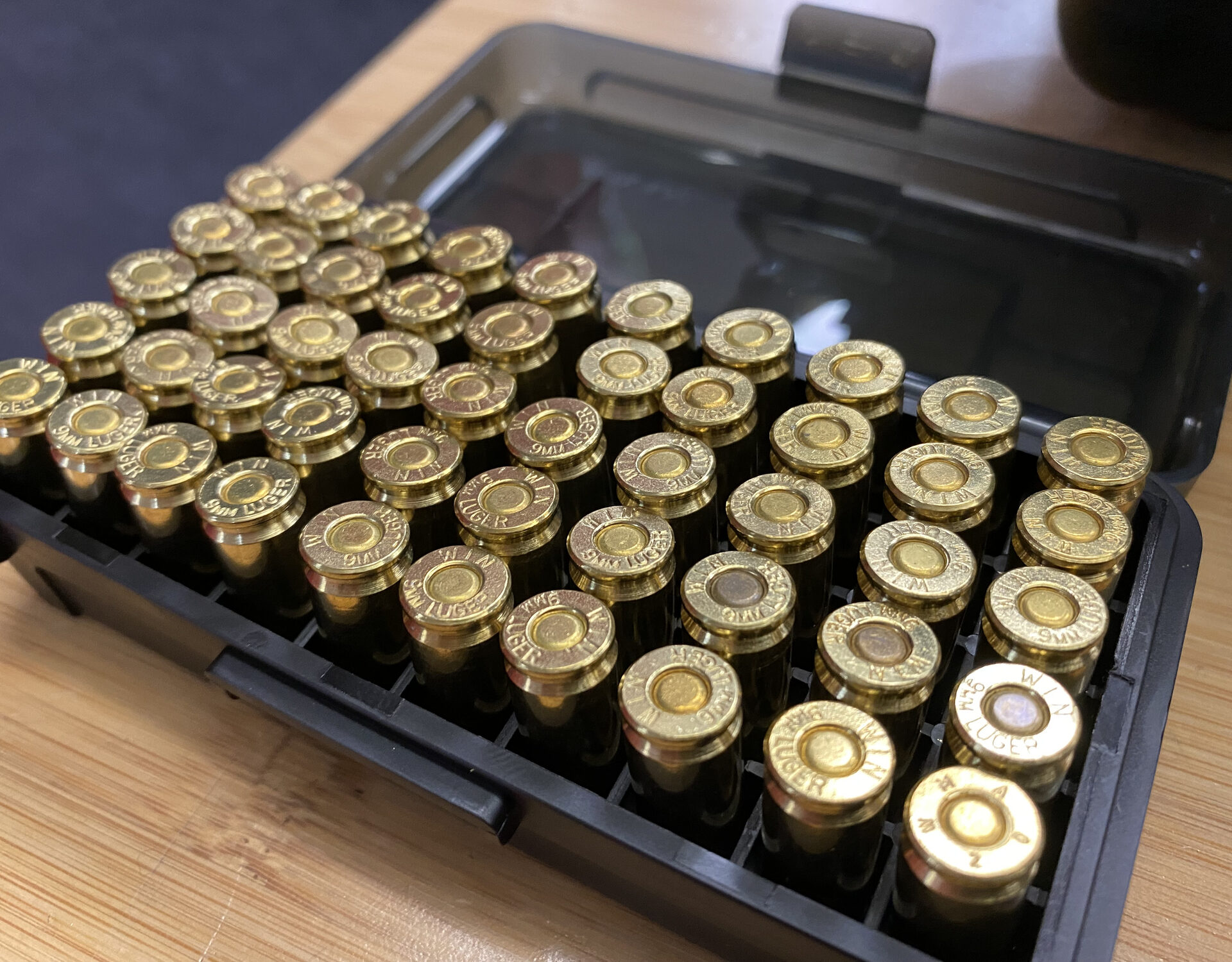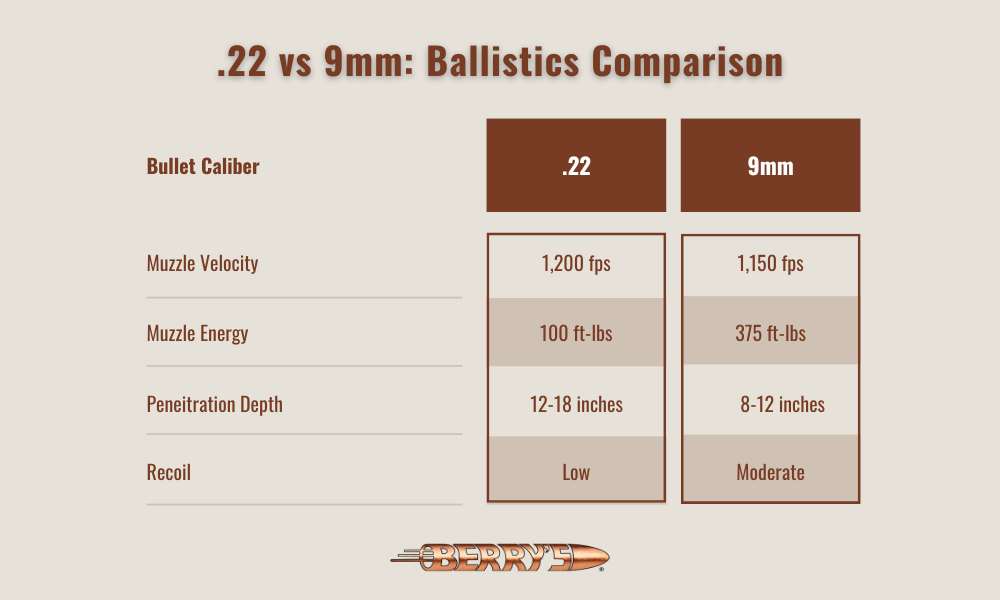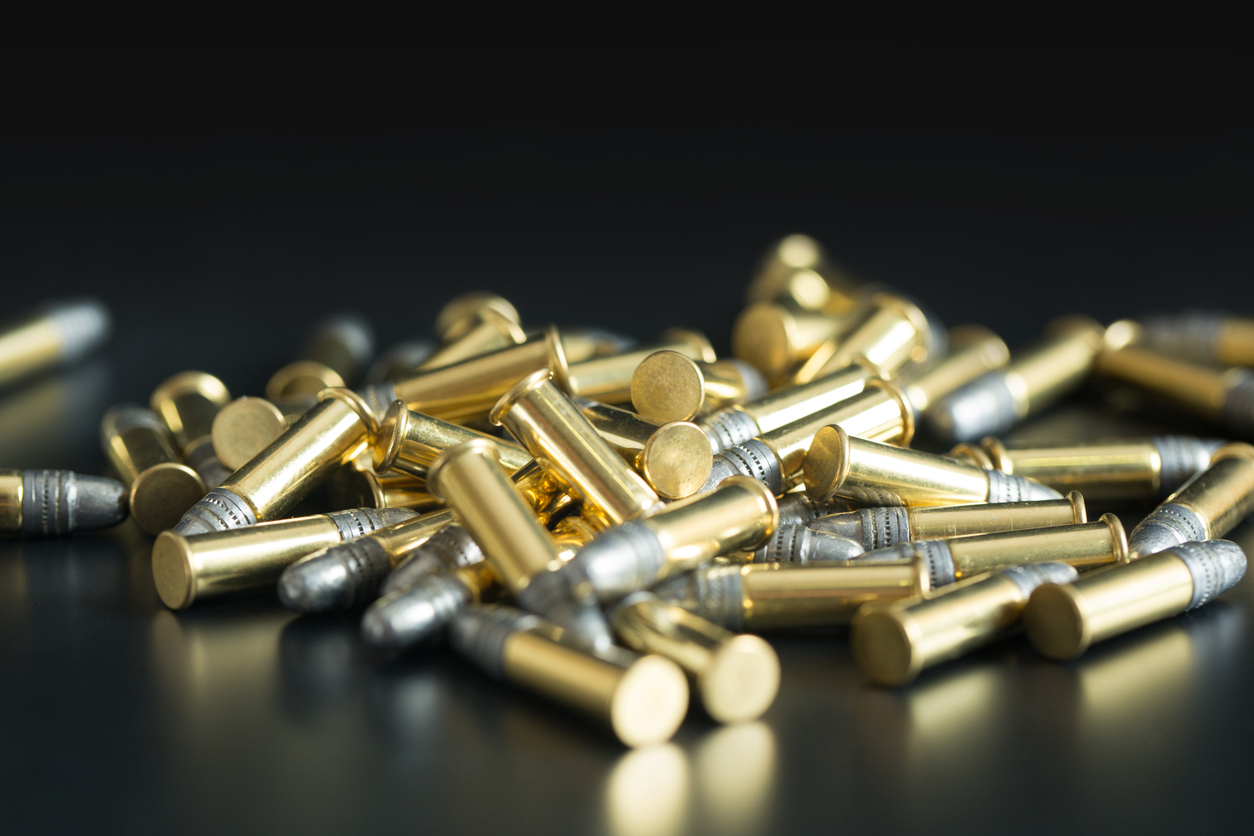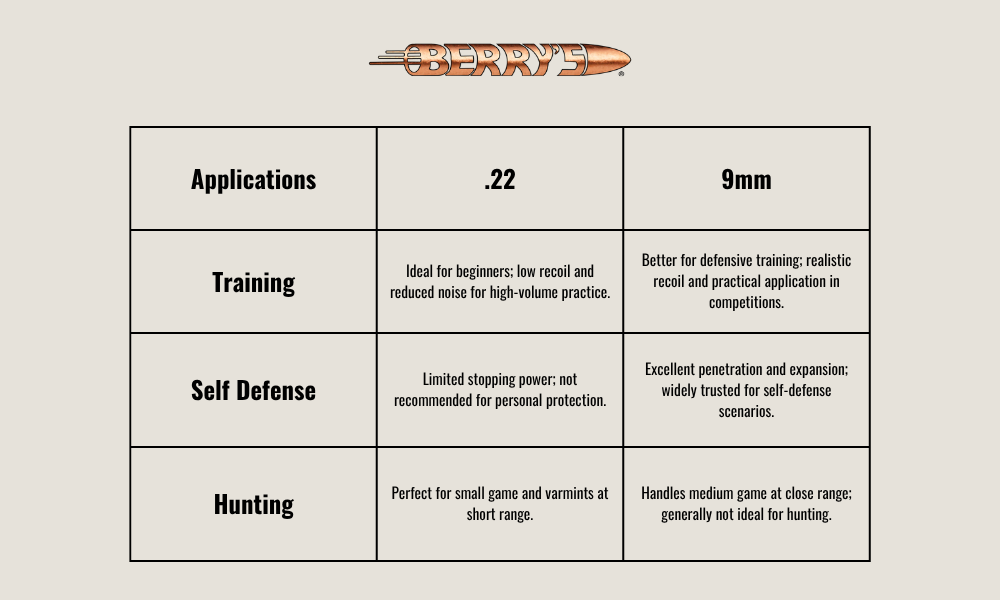Your cart is currently empty!

.22 vs 9mm: Which Caliber Is Right for You?
Table of Contents:
The Short Answer: The .22 long rifle excels for training and small game hunting with minimal recoil and exceptional accuracy, while 9mm offers superior stopping power for self defense and law enforcement applications with manageable recoil and proven effectiveness.
At first glance, comparing .22 LR and 9mm might seem unusual. The .22 is traditionally a rifle cartridge, while the 9mm is designed for handguns. So what’s the point? The reason for this debate is that both bullets have cross-platform capabilities and are two of the most popular calibers for civilian gun owners. The .22 long rifle, introduced in 1887 as a rifle cartridge, has since been adapted to countless pistols and revolvers. Conversely, 9mm has found new life in rifles, especially pistol-caliber carbines (PCCs) that offer rifle-length barrels with handgun ammunition.
Both calibers serve as entry points for new shooters, training platforms for experienced marksmen, and cost-effective options for high-volume practice. Understanding their strengths in both rifle and handgun applications will help you choose the right caliber for your needs.
Physical Characteristics and Ballistic Performance
The rimfire cartridge .22 LR and the centerfire cartridge 9mm represent fundamentally different bullet technologies designed for different purposes.
Size and Specifications Breakdown
The .22 long rifle features a bullet diameter of .223 inches with typical bullet weights ranging from 30 to 40 grains. The 9mm measures .355 inches in diameter with common grain bullet options from 115 to 147 grains, which is nearly three times heavier than most .22 LR bullets.
Key Specifications:
The overall length and case length of each cartridge also impact firearm design and compatibility. The 9mm cartridge is longer and thicker, requiring larger frames and stronger actions compared to the compact and lightweight .22 LR.
Velocity and Energy Comparison
The ballistic performance gap between these calibers is substantial:
- .22 LR: Standard loads around 1,070 fps, with high-velocity options reaching 1,200+ fps
- 9mm: Typically delivers 1,000-1,150 fps, depending on bullet weight
- .22 LR: Generally produces around 100-140 ft-lbs of energy
- 9mm: Generates approximately 350+ ft-lbs with standard loads
This kinetic energy difference dramatically affects terminal performance. The 9mm with its bigger bullet and heavier bullet weight consistently achieves FBI-recommended penetration depths of 12–18 inches in ballistic gelatin, while the smaller bullet of .22 LR typically reaches 8–12 inches with less consistent expansion.
Recoil Characteristics and Shootability
The recoil difference between these calibers significantly impacts shooter experience and training effectiveness.
Recoil Energy Analysis
The .22 LR produces minimal light recoil, typically less than 1 ft-lb of recoil energy. This gentle impulse allows new shooters to focus on sight alignment and trigger control without developing flinch responses. Extended shooting sessions remain comfortable even for recoil-sensitive shooters.
The 9mm generates approximately 5–7 ft lbs of recoil energy in typical handguns. While noticeably more than .22 LR, this remains manageable for most shooters and allows for quick follow-up shots. The centerfire cartridge produces a sharper impulse compared to the .22’s gentle push.
Training Considerations
For New Shooters:
- .22 LR: Ideal for learning fundamentals without intimidation
- 9mm: Better preparation for defensive pistol caliber scenarios
For Experienced Shooters:
- .22 LR: Cost-effective high-volume training
- 9mm: Practical training with actual defensive ammunition
Many instructors recommend starting with .22 LR vs 9mm before transitioning to centerfire cartridge training. This progression builds confidence while developing proper shooting mechanics.

Platform Performance: Rifles vs Handguns
Understanding how each caliber performs across different platforms reveals its true versatility and limitations.
In Rifle Applications
.22 LR in Rifles:
- Advantages: Exceptional accuracy potential with quality ammo, virtually no recoil, perfect for target shooting and small game hunting
- Effective Range: Suitable for close to moderate range shooting with quality ammunition
- Applications: Varmint hunting, precision training, competitive rimfire shooting
- Popular Platforms: Ruger 10/22, CZ 457, Savage Mark II
9mm in Rifles (PCCs):
- Advantages: Higher velocity from longer barrels, improved accuracy, shared ammunition with handguns
- Effective Range: Extended range capability with proper bullet selection
- Applications: Home defense, competitive shooting, tactical training
- Popular Platforms: Ruger PC Carbine, CZ Scorpion, various AR-9 builds
The longer barrel length provides a noticeable velocity boost for both calibers. A .22 LR can gain over 250 fps when moving from a 4-inch pistol barrel to a 16-inch rifle barrel, with gains tapering beyond that length. Similarly, 9mm often picks up an additional 100–200 fps (sometimes up to 250 fps) in a carbine-length barrel, offering slightly better trajectory and energy retention compared to a handgun.
In Handgun Applications
.22 LR in Handguns:
- Advantages: Minimal recoil, affordable practice ammunition, compact package
- Limitations: Reduced velocity, rimfire reliability concerns
- Best Uses: Training fundamentals, recreational shooting, small game hunting
- Magazine Capacity: Typically 10-12 rounds in semi-automatic pistol designs
9mm in Handguns:
- Advantages: Proven self defense performance, high magazine capacity, wide ammunition selection
- Limitations: More recoil than .22 LR, higher ammunition costs
- Best Uses: Personal protection, law enforcement, competitive shooting
Magazine Capacity: 15-17+ rounds in modern semi-automatic pistol platforms

Practical Applications and Use Cases
Understanding real-world applications helps determine which caliber best serves your shooting needs.
Training and Skill Development
.22 LR Training Applications:
- Developing sight alignment and trigger control
- High-volume practice without fatigue
- Youth shooting programs and new shooter introduction
- Precision shooting fundamentals with the lightweight LR bullet
- Indoor range training with reduced noise
9mm Training Applications:
- Defensive pistol training with realistic recoil
- Law enforcement qualification courses
- Competition shooting preparation
- Tactical shooting scenarios
- Transition training from .22 LR fundamentals
Self Defense Capabilities
The self-defense comparison strongly favors the 9mm. Modern 9mm hollow points deliver reliable expansion and adequate penetration in soft tissue, consistently meeting FBI protocols for defensive ammunition. The bigger bullet diameter and higher kinetic energy provide superior stopping power and can more effectively reach vital organs compared to the smaller bullet of .22 LR ammo in a self-defense situation.
9mm Self Defense Advantages:
- Proven terminal ballistics with quality defensive loads
- Higher magazine capacity (15-17+ rounds typical)
- Better barrier penetration through heavy clothing or automotive glass
- Wider selection of proven defensive bullet designs
22 LR Limitations for Defense:
- Inconsistent expansion and penetration with available bullet designs
- Lower kinetic energy and stopping power
- Rimfire reliability concerns in critical situations
- Limited effectiveness for long-range shooting compared to centerfire options

Choosing Your Caliber
When comparing these calibers for different applications, there’s often a clear winner depending on your specific needs. The size difference between the .22 LR bullet and 9mm makes each better suited for distinct purposes, from training with light recoil to serious defensive applications.
Choose .22 LR if you:
- Want minimal recoil for new or recoil-sensitive shooters
- Focus on precision target shooting and fundamentals training
- Hunt small game within appropriate ranges
- Prefer quiet shooting for backyard plinking (where legal)
- Need an affordable training complement to centerfire shooting
Choose 9mm if you:
- Require proven self defense capability
- Want versatility across rifle and handgun platforms
- Plan to compete in practical shooting sports
- Need barrier penetration and reliable terminal performance
- Prefer one caliber that works for training and serious applications
- Want maximum magazine capacity in defensive situations
Why Choose Berry’s Manufacturing for Your Ammunition Components
Whether you choose .22 caliber or 9mm for your shooting needs, the quality of your components makes all the difference in performance and reliability. At Berry’s Manufacturing, we’ve spent over 60 years perfecting bullet manufacturing to deliver the precision and consistency that serious shooters demand.
Superior Products for Every Application
Berry’s .224 Jacketed Bullets: Our precision-manufactured .224 caliber jacketed rifle bullets deliver exceptional accuracy for centerfire applications. Engineered for consistent performance, whether you’re building precision loads for target shooting or developing hunting rounds for small game.
Berry’s 9mm Bullets: Available in weights from 115 grain to 147 grain, our 9mm bullets are engineered for clean shooting, balanced ballistics, and reliable terminal performance. Trusted by competitive shooters, law enforcement professionals, and civilian defenders who demand consistent results.
Our advanced copper-plating process and strict quality control ensure every bullet meets exacting tolerances for weight, diameter, and concentricity. From cost-effective training loads to premium defensive applications, Berry’s bullets maximize your chosen caliber’s potential.
Don’t settle for inconsistent performance when precision matters most. At Berry’s, we provide American-made quality and reliability you can trust. Check out our complete range of bullets today and discover why three generations of shooters trust our bullets.
